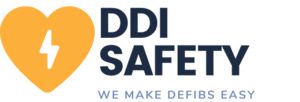Great news! Our supplier Defibtech now has many of their models back in stock after being sold out all year!
To celebrate, we are able to offer $500 off their 7 year battery Lifeline Standard Automatic and Semi-Automatic Packages for the next week.
Why consider this defibrillator? It has a huge 7 year battery standby life. That means it is one of the lowest maintenance defibrillators on the market.
It's also designed to be military grade, so it's a great durable option for public places.
Also, for those of you who have mentioned the Cell-AED defibrillator, read a comparison between it and our models in our latest blog post.
Although the $299 cost of entry seems great, in the long run it is more expensive than other defibrillators, and delivers a considerably lower energy shock.
https://ddisafety.com.au/should-you-actually-buy-a-cell-aed-…


Just be aware that if the patient is flatlining this will not restart the heart.